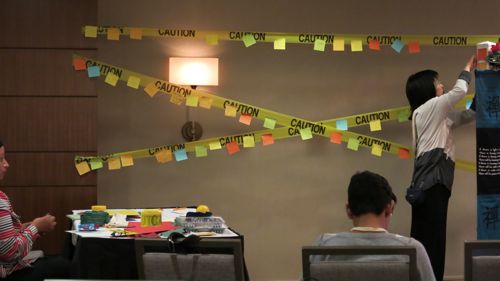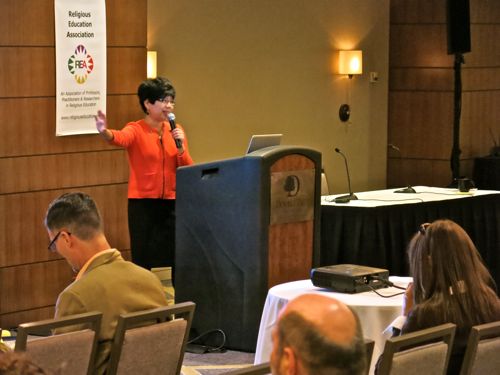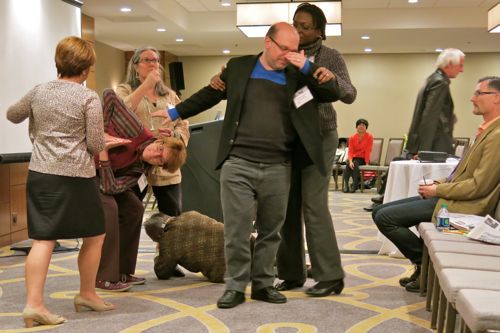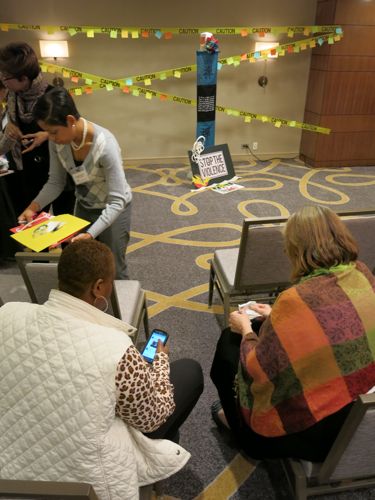In the final breakout session at the Religious Education Association 2014 conference, I attended a presentation by Mualla Selçuk of Ankara University and John Valk of the University of New Brunswick titled “Journeying into Peaceful Islam: A Worldview Framework Approach.”
Valk and Selcuk reported on a pedagogical model they used to engage Muslims and non-Muslims in learning about “a comprehensive Islam.” The problem they are addressing with their pedagogical model is pervasive stereotyping regarding Islam. In particular, Islam is stereotyped as violent; as authoritarian, patriarchal, and rigid; as a religion that persecutes other religions; etc.
Sometimes the stereotyping of Islam is subtle, particularly in media coverage of Islam in the west. Media coverage of Islam “often confuses correlation with causation” — if an individual Muslim engages in, say, an act of violence, the act of violence will be attributed to the individual’s religion. Sometimes the stereotyping is not as subtle, as when anti-religious and anti-Islamic discourse cherry-picks elements of Islam (or religion more generally) to “prove” that religion/Islam is bad.
Religious education can be complicit in stereotyping, if it uses a passive passive pedagogical model. It’s not enough to give students information about religion, e.g., disconnected facts (e.g., Muslims pray using certain prescribed body motions), or prescribed answers (e.g., Islam as a whole believes X).
Valk asserted that an appropriate pedagogical model must include an experiential component. He mentioned site visits, meetings with spiritual leaders, human interaction, etc. He added that “personal engagement” is also necessary, i.e., engaging the questions and challenges of Islam: religious, spiritual, science, religion, etc. Valk said that they challenge the learners to think. “So instead of saying, ‘Islam believes in God’,” he said, “We ask, ‘What does it mean to believe in God?’ … Let the students explore the possibilities.”
Valk then outlined their worldview framework for an appropriate pedagogy. This worldview framework has five sub-frameworks, including: personal/group identity;
cultural dimensions;
existentialist questions; etc.
The pedagogy uses a “Socratic” approach of open-ended questions.
Mualla Selçuk, a Muslim, pointed out that Valk is a Christian. Thus the collaboration between them reflects their pedagogical approach. She referred her listeners to their recent article in the REA journal for more information about their work. “This worldview approach to Islam, or I would argue to any religious or secular worldview,” she concluded, “is a valuable resource for religious educators and teachers.”
One questioner asked, “Both your presentations had components of unlearning. Do you have a pedagogical model for this?” While unlearning was not explicitly mentioned in their model, this was something they had thought about.




